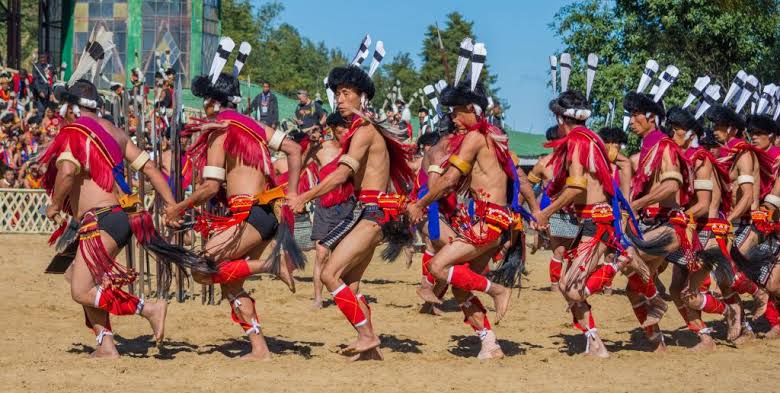When we talk about Nagaland, the first thing that comes to mind is the Naga people and their rich traditions. One of the beautiful parts of their heritage is the Naga Dances. They are also known as ‘Naga War Dance’ for their nature and practices.

Naga dances are martial arts-based celebratory dances that depict their valor, bravery, and strength. Both men and women can participate in these performances. These traditional folk dances start with a prelude and way-out steps.
Naga War Dance
The whole body and the entire movement of the dancers are employed as a single unit. Their footsteps and movements depict the unique war techniques. It is also a powerful means of expressing cultural traditions. The synchronization of the steps and body movements among the dancers is noteworthy that essentially reflects their unity and understanding of power. Sildenafil Citrate http://www.wolfesimonmedicalassociates.com/sildenafil-citrate/
The Naga dance is based on martial art that is related to their headhunting tradition. The costumes spears, swords, shields, and so on worn by the performers mirror their mythological stories, oral history, folklore, war, romance, and nature’s omnipotence.
Following is the list of dances performed in Nagaland
- Bamboo Dance
- Gethinglim Dance
- Hetaleulee Dance
- Nsuirolians Dance
- Rangma Dance
- Temangnetin Dance
- Zeliang Dance
Naga Dance Costume
Male and female dancers wear traditional costumes for the performances. Men usually wear headgear, ear cotton, necklace, boar task, chestline, loin, wrist band, bead kilt, mini waist basket, anklet, fur handled dao, fur handled spear, and shield.
Women usually adorn themselves with earrings, necklaces, headgear, string necklace, armband, spiral bracelet, mekhela, waistline, iron/walking stick, smoke pipe, basket. Women wear more silver or gold ornaments than men.
The Tradition of Naga Dance
These folk dances have certain distinctive characteristics like aggressive movements, strong rhythmic folk music, and beat. Mostly these folk dance illustrates the stories of bravery, power, courage, and strength. This is a symbol of victory.
The most important thing about Naga war dances is that they demonstrate war skills. Most martial professionals take part in this folk dance. They depict the war techniques and the skills that their forefathers used to have in order to show respect to their ancestors and to feel proud about their culture, and most importantly to sustain their traditions. Usually, local folk songs with a strong tune or beat accompany war dances. The participants use drums as a musical instrument. Modafinil for sale http://sellersvillepharmacy.com/modafinil.php
Naga folk dances are unique and typically portray the tradition and the culture of the Naga. In modern times, these traditional dances have been amalgamated with modern dance techniques. It has created a fusion type of dance. But still, in parts of Assam, Nagaland, and other regions of north-east India, the performers try to preserve their exclusive and distinctive culture and tradition, especially the Naga Dance.
Assam is greatly influenced by the traditions of the Nagas. Naga Dances are very popular here, especially in the Dima Hasao district of Assam.

Pingback: All Folk Dances of India - Auchitya
Pingback: All Folk Dances of India - Auchitya
Pingback: All Folk Dances of India - Statewise Complete List - Auchitya